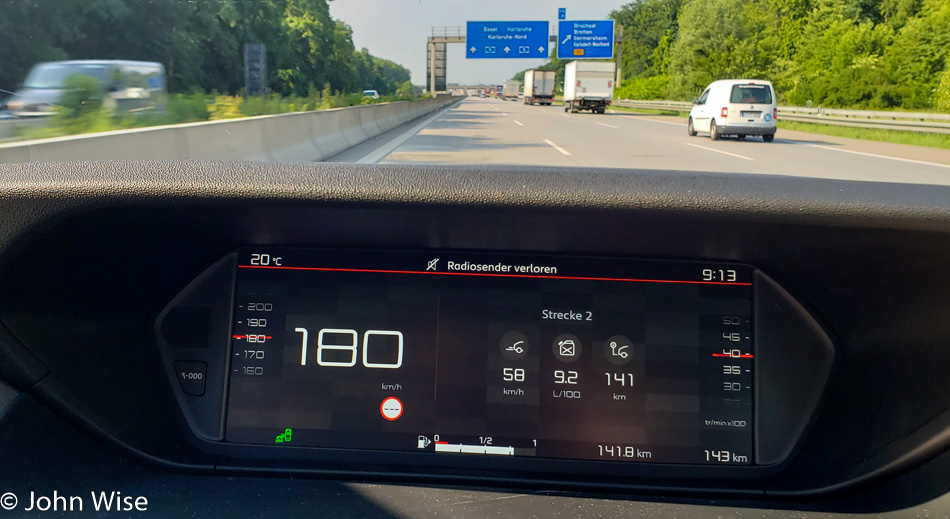
Today begins our road trip out of Germany. We left Frankfurt early, and sadly, there was heavy enough traffic this morning that I was never able to drive faster than 180 kph (115 mph), so I’m hoping that on the return journey, I might yet see 132 mph (200 kph). Next stop: Karlsruhe.
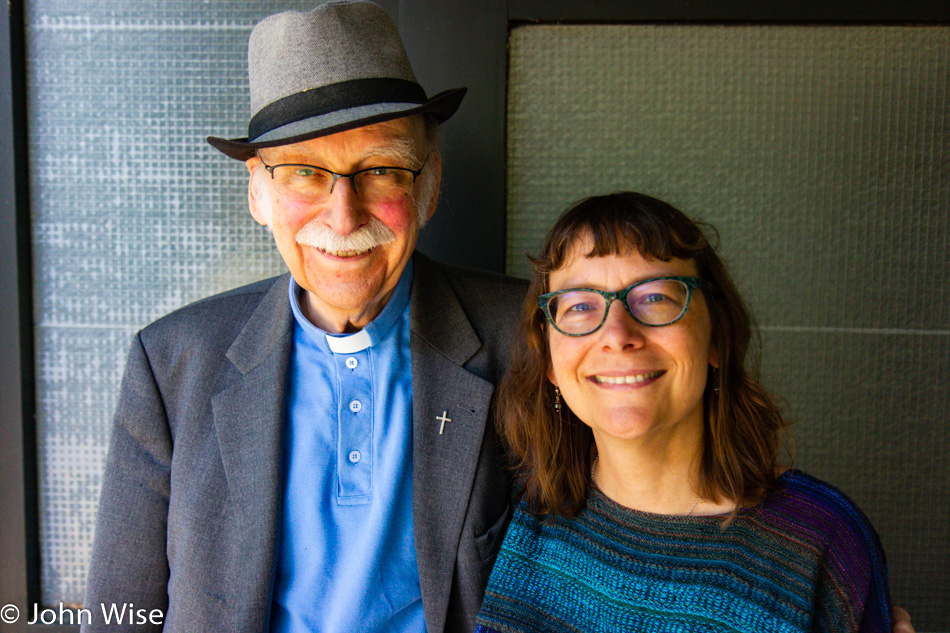
We had this appointment with Caroline’s father, Father Hanns Engelhardt, here in Karlsruhe before the official beginning of the road trip. He and Caroline spent the first part of the meeting talking about language and Hungary to a large extent. At lunch, the conversation switched to English and philosophy, specifically to Schopenhauer, Adorno, and Horkheimer. Hanns will be in Hungary about a week after us, giving a talk to the Hungarian-German Lawyers Association, of which he is the co-founder. Before Hanns became Father Hanns, he was a judge at Germany’s Federal Court of Justice.
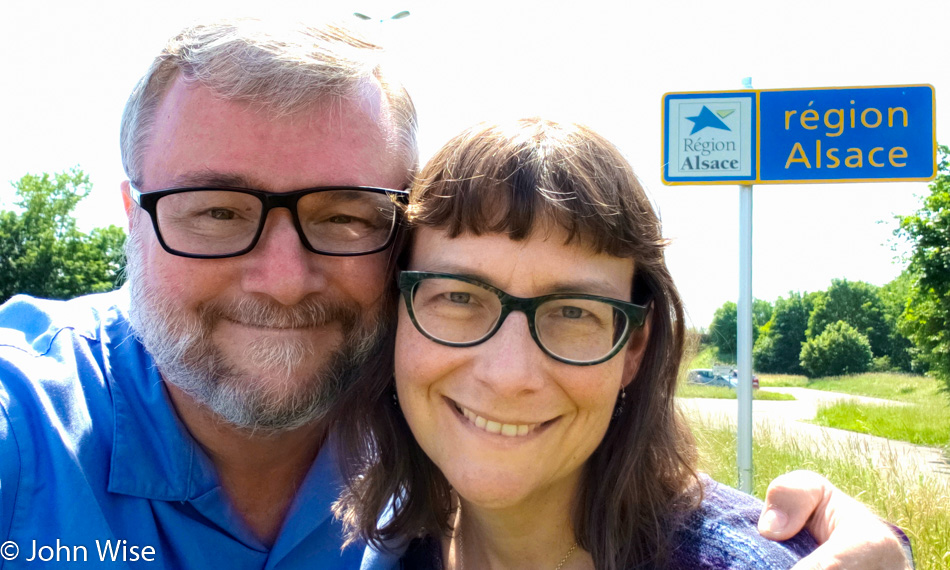
Entering France.
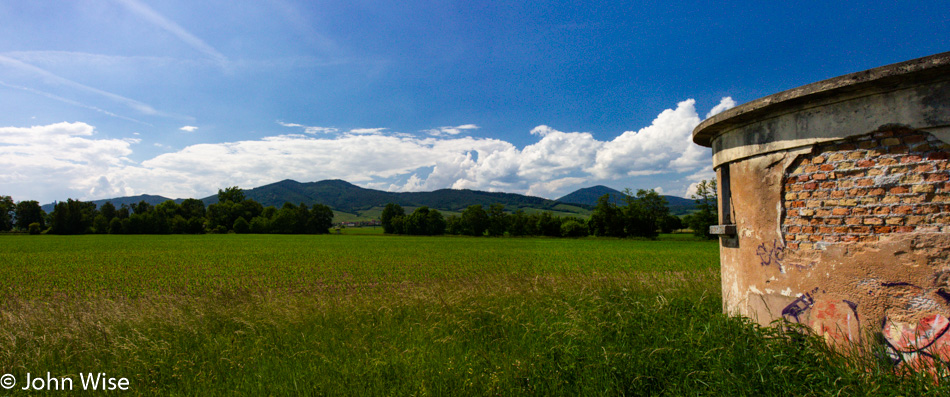
Nice to start the no-obligation, self-indulgent leg of the trip with such beautiful weather. We are now officially on holiday.

We find that it is often difficult to spot a pullout where we can stop for a photo not just in France but across our travels in Europe. It is as though roads are merely a practical means for moving between points instead of admiring the views and capturing the memories of a road trip. This is one area that America got right.
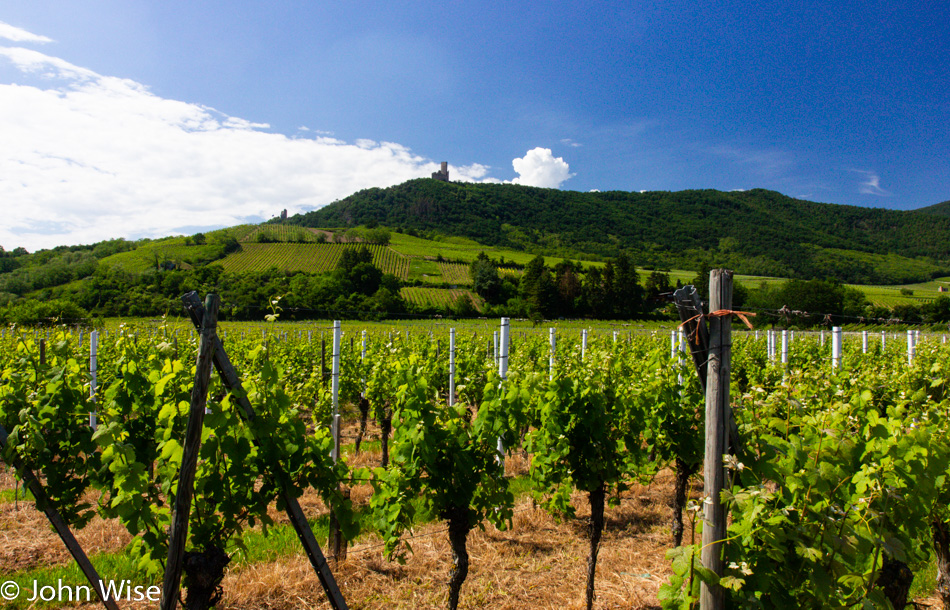
Beyond the vineyards, a castle is perched upon the hilltop, creating a spectacular view!
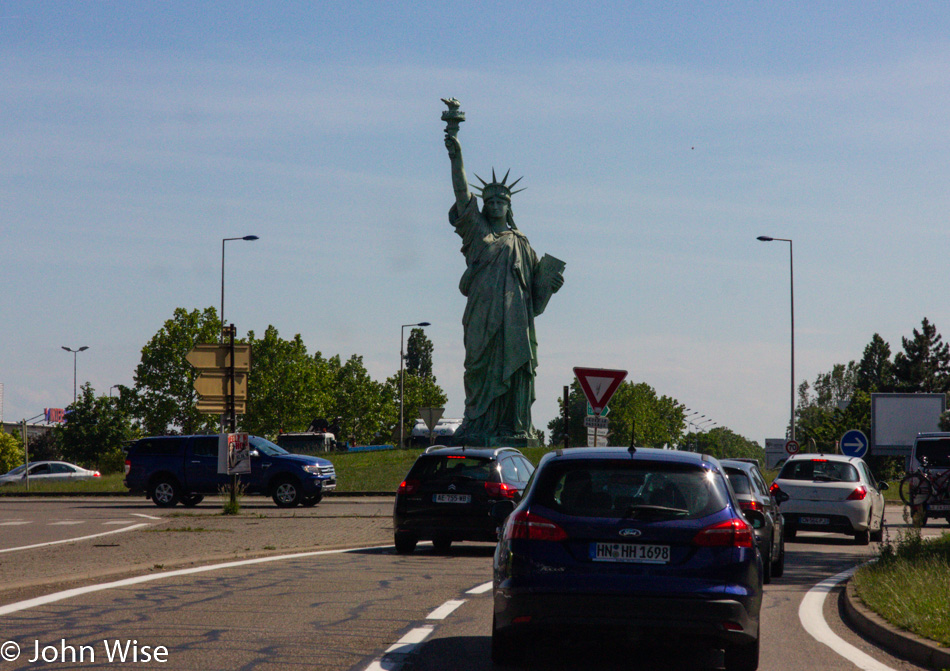
With this scale version of the Statue of Liberty, we figured the village of Colmar, France, must have something to do with the monument that arrived in the U.S. back in 1885; sure enough, the sculptor Frédéric Auguste Bartholdi, who designed Lady Liberty was from Colmar.
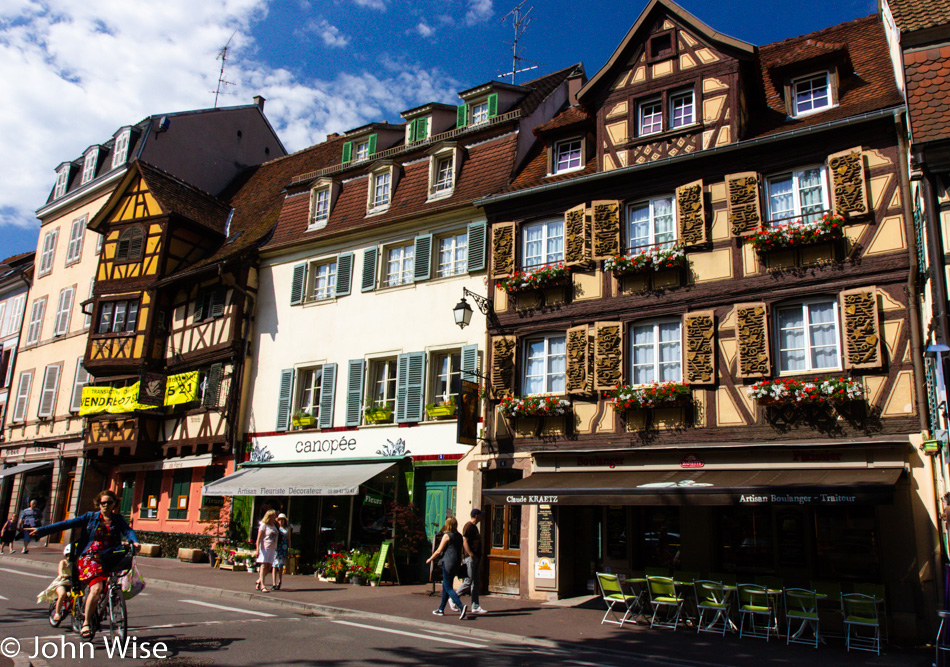
We arrived in the city center and found parking fairly quickly. Summer holidays for Europe don’t start for about another month but already things are pretty crowded, although still only a fraction of what’s about to happen. When planning for our trip to Europe last year, we already knew that if we couldn’t leave before June 1st or after September 15, our flights would be much more expensive and our lodgings too.
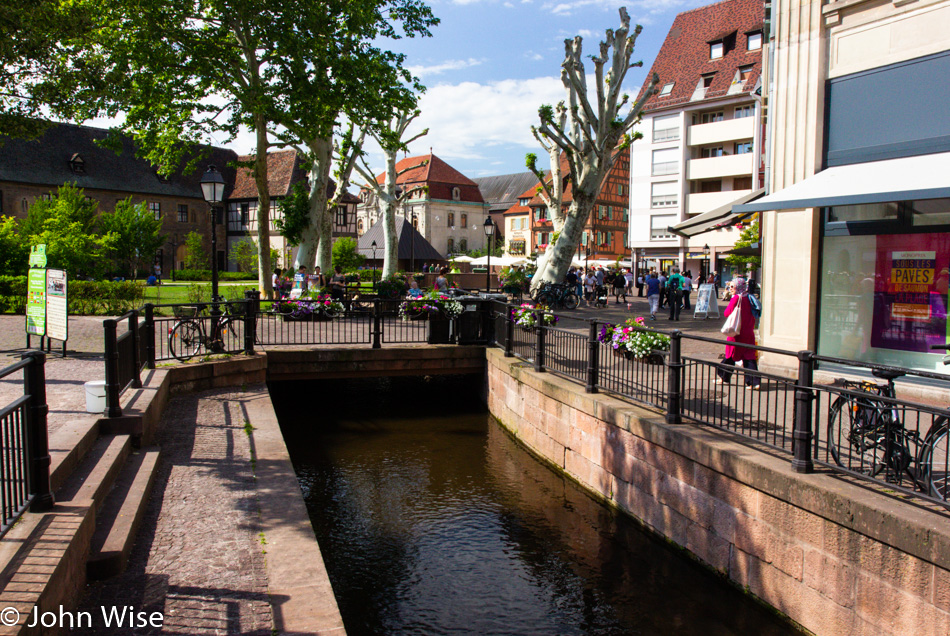
We had left Karlsruhe around our planned getaway time of 1:00 p.m., so we would arrive here in Colmar while a particular museum was still open. That’s where we are heading right now.

Welcome to the Unterlinden Museum. This place houses a very special, unique, and historic piece of history, but I’ll hold off on sharing what that is until we get to it in the same sequence as we first came upon it during our visit.
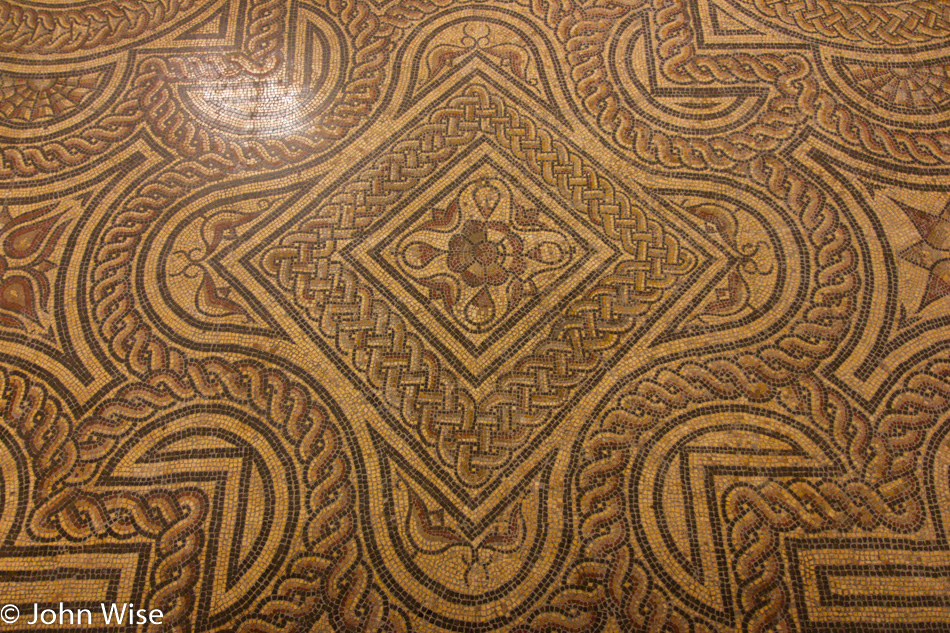
There are several other historic pieces of work, architecture, sculptures, and art from the area from Roman times onward. This image is of the details of a Roman tiled floor.
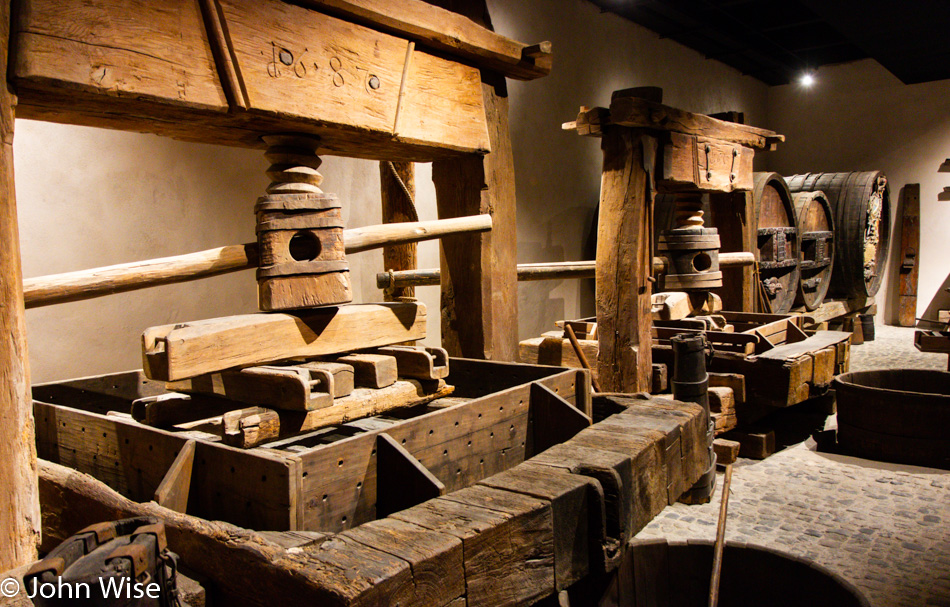
Makes one wonder if anyone presses their grapes using this old method anymore.
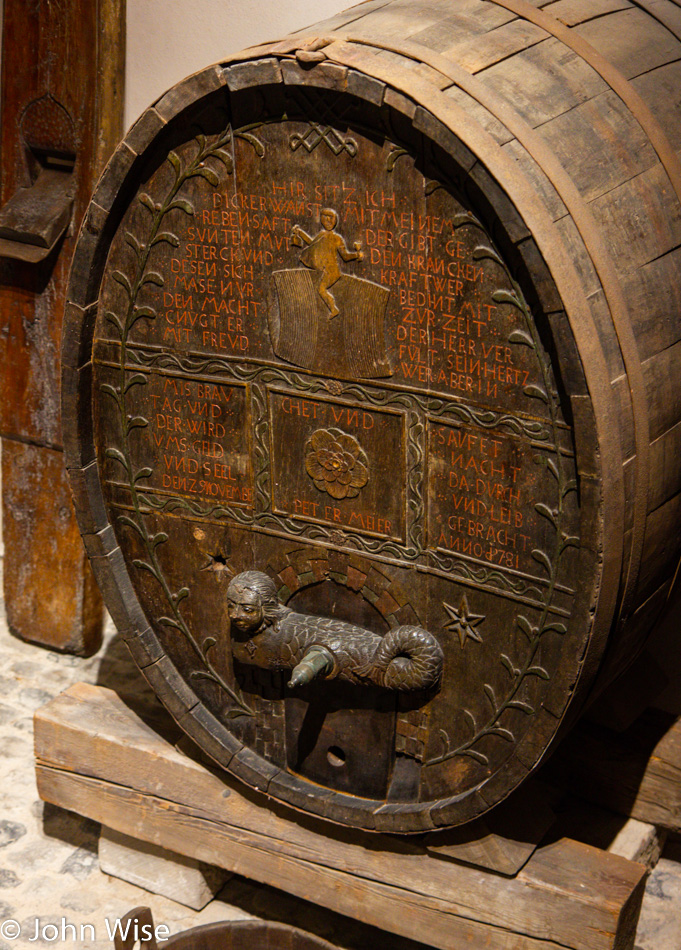
Even the casks back in the day might become historically important in the future as this one did. This is what the inscription says: “Here I sit, fat-bellied, with my juice of the vine which makes healthy people brave and gives strength to the sick. Those who help themselves of it with measure the lord will make happy and will fill their hearts with joy. Those who misuse and drink too much day and night will lose money, body, and soul. On 9th November 1781. Peter Meier.”
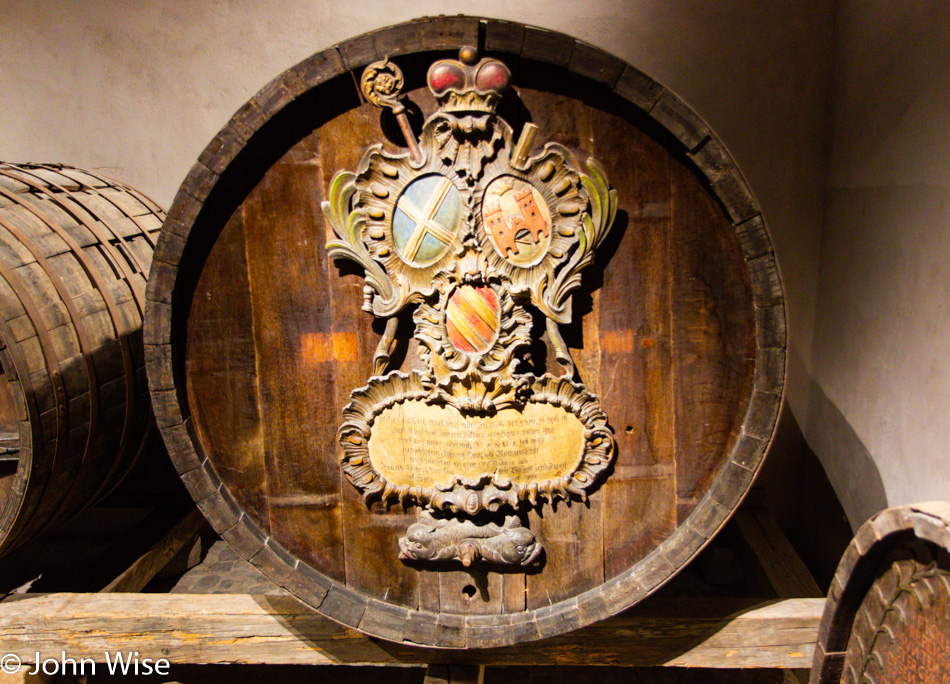
Maybe we should have done better research and found out if there were any bottles from these casks still sealed and in someone’s collection somewhere on Earth.
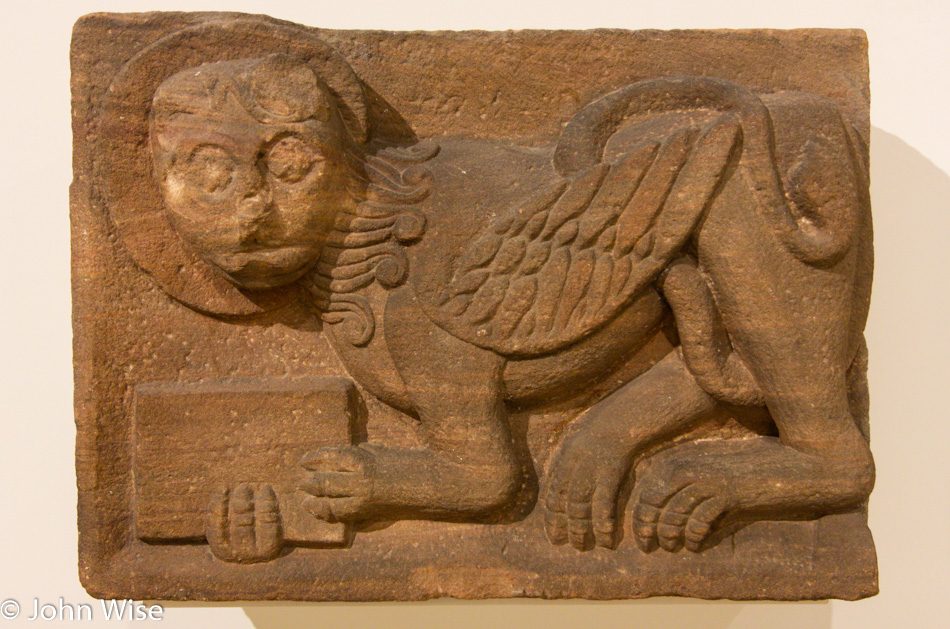
While I’ve seen plenty of pieces similar to this at museums as far away as Los Angeles in the Hearst Collection, seeing them from the region of origin allows us to get a better sense of the local history instead of some distant random place where a wealthy individual was able to adorn their home with the historic treasures of another culture.
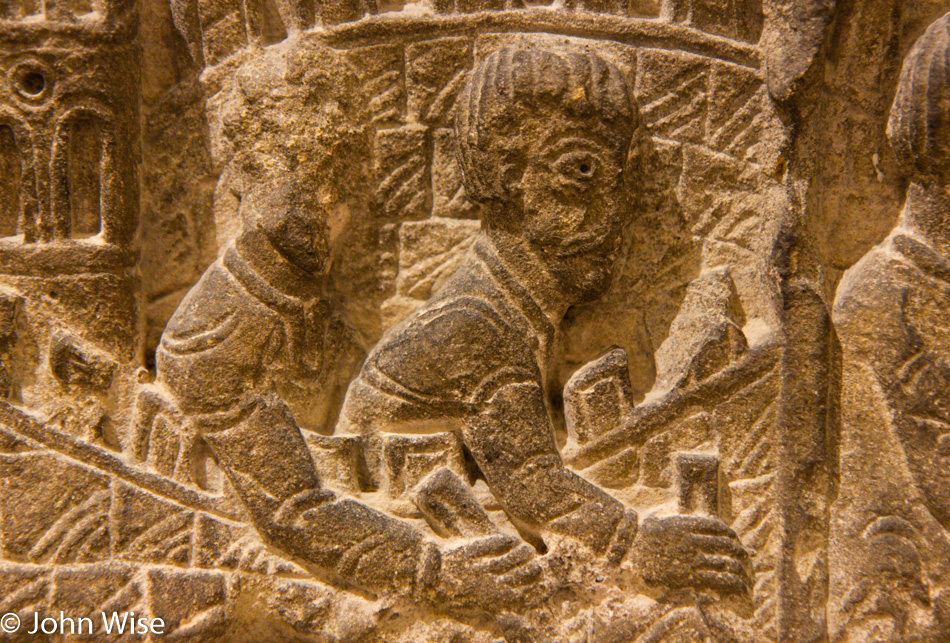
Just walking through the halls, Caroline and I saw our doppelgangers from antiquity.
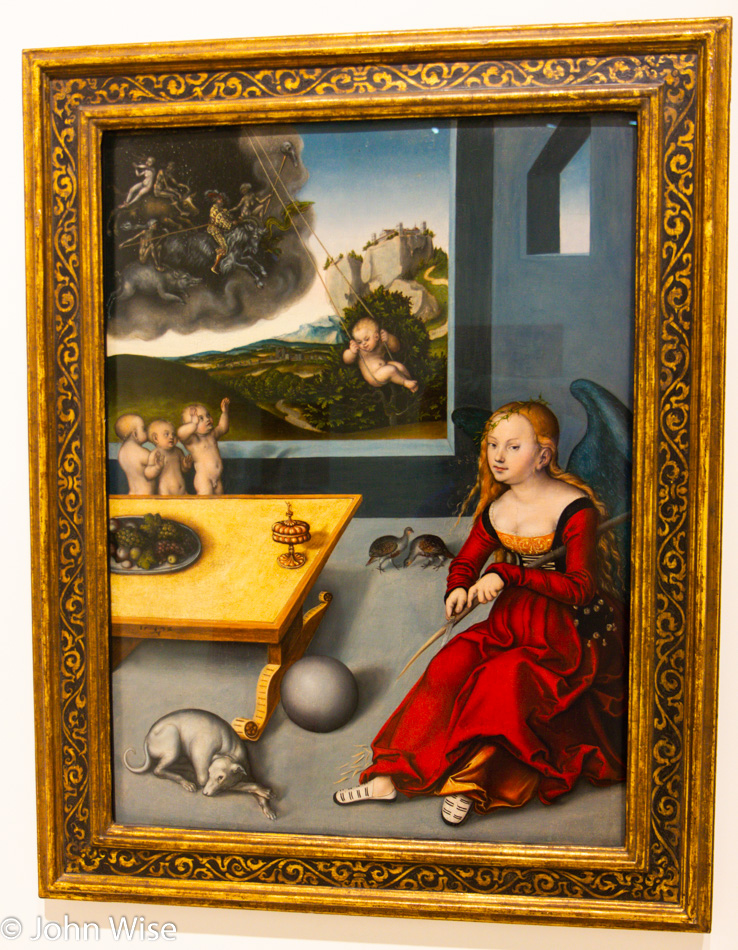
A scene within a scene within a scene (Melancholy by Lucas Cranach the Elder).
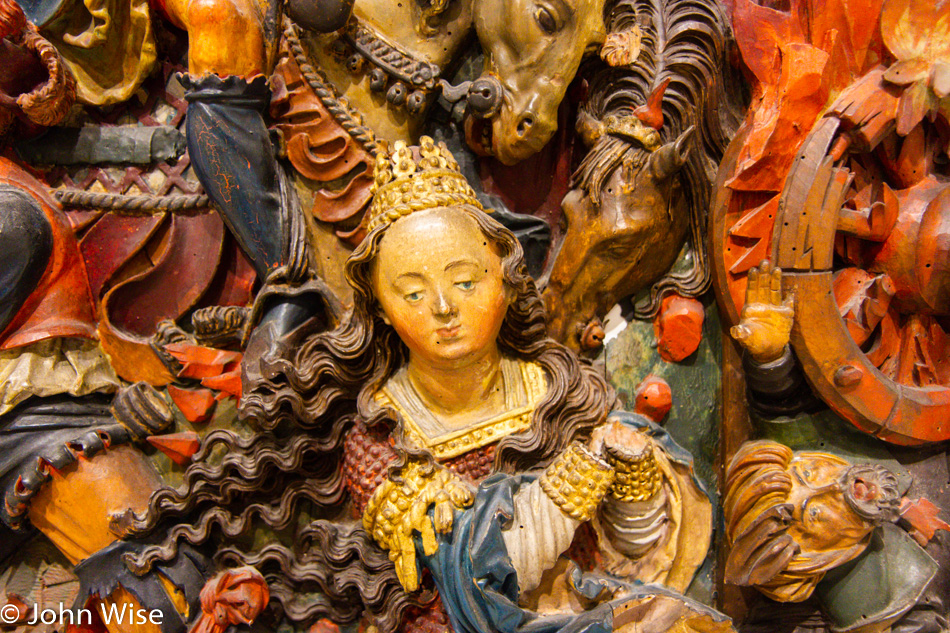
It kind of makes you want to take up carving wood panels as a hobby so you can translate your favorite Elvis Presley glow-in-the-dark velvet poster into something a bit more three-dimensional, doesn’t it?
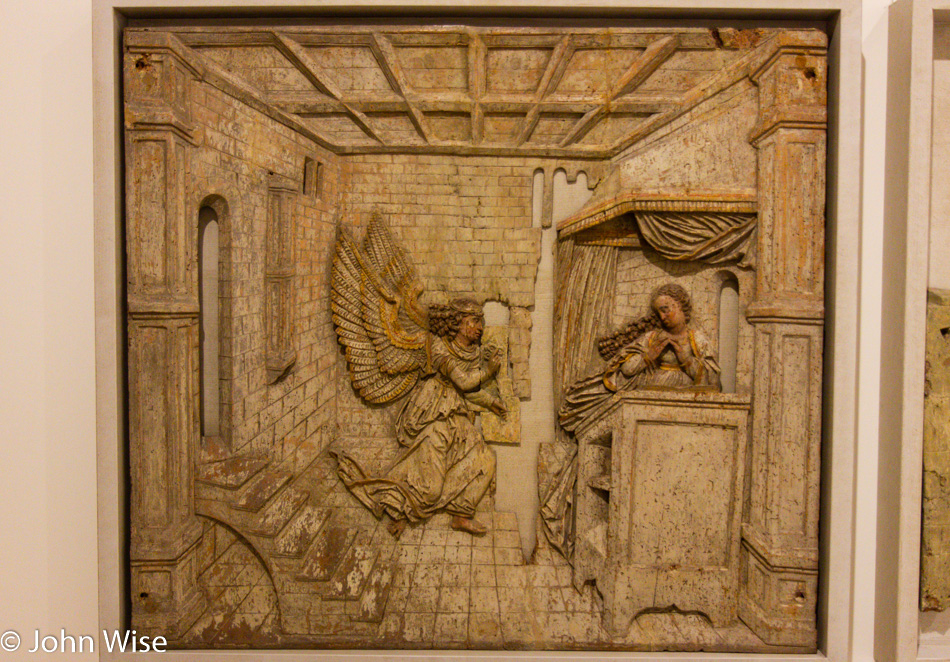
In the days before wallpaper, there were large wood tiles. We need to bring back this art.
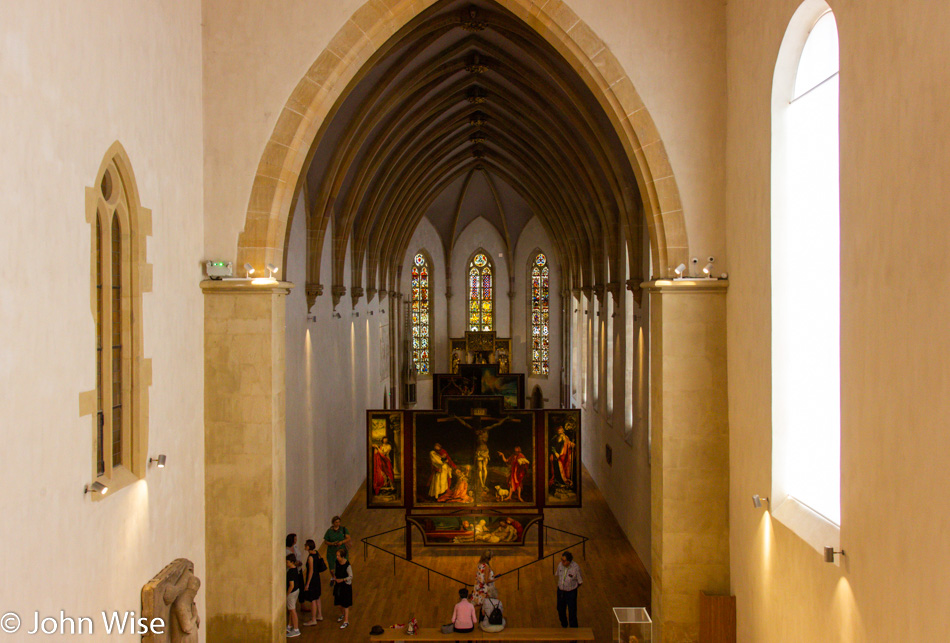
And this is why we came to the Unterlinden Museum, the Isenheim Altarpiece.
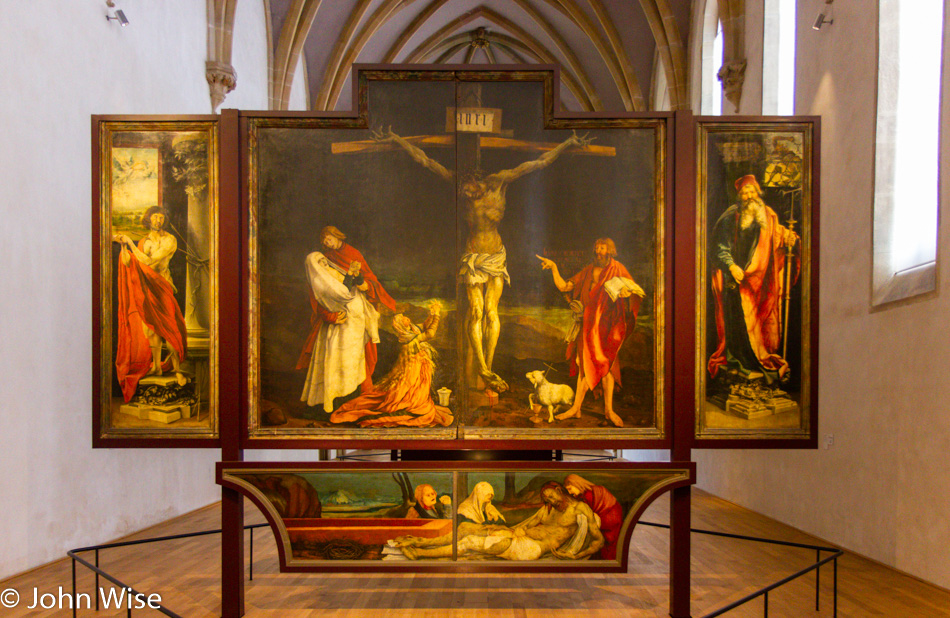
Imagine a visitor to a church walking up to this 500 years ago, kind of what one might expect right? Well, there’s a lot more to this than meets the eye. I’d think that the common person five centuries ago wasn’t as lucky as us to be able to see this work and study it in the light we can for the cost of a few Euros.
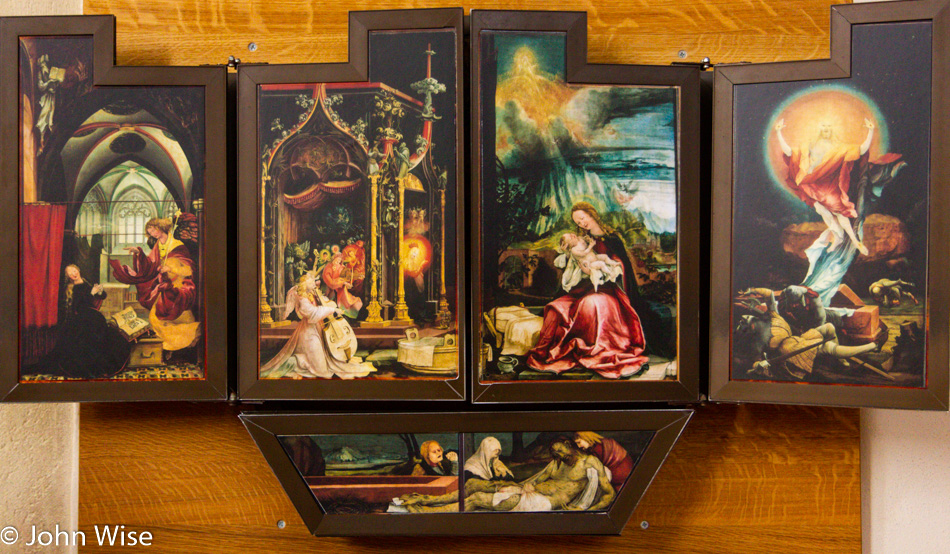
Those panels in the picture above this one open up to reveal other scenes from the bible, and successive panels behind those open to yet other scenes so that gradually, the Altarpiece is fully revealed. This work was originally done by Germans Niclaus of Haguenau and Matthias Grünewald back in 1512–1516.
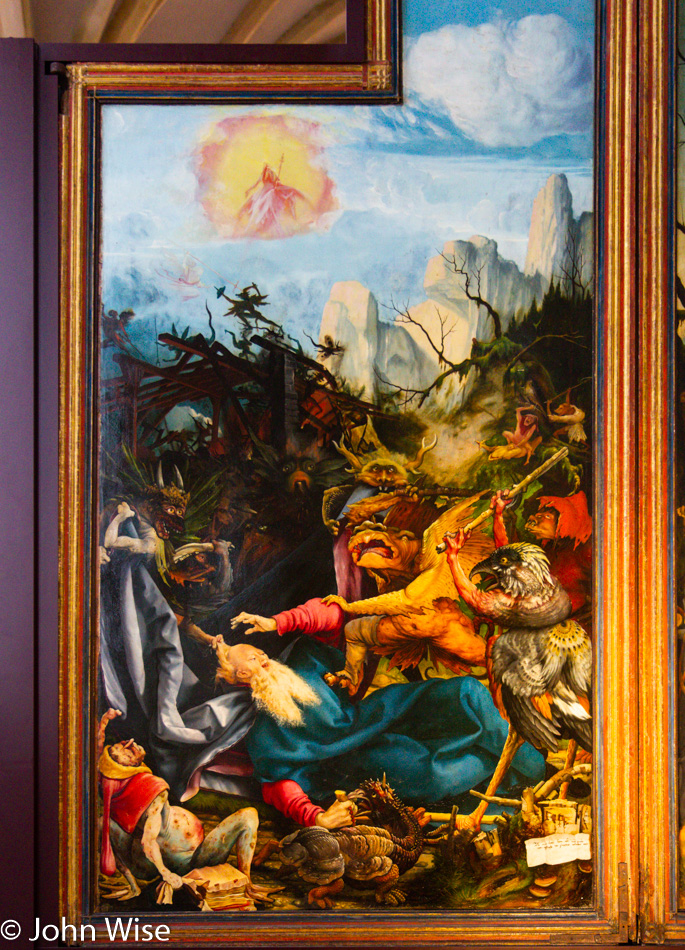
This is part of the final panels prior to arriving at the sculpted elements of the Altar. I’m not showing you each and everything due to the length this blog post has already taken on, plus it gives you something to discover should you ever find yourself in the Alsace region of France along the German border. What struck me as we came around the corner and crashed into this artwork was how incredibly psychedelic it is. Not just a little psychedelic but full-on, “Was this guy on mushrooms?” kind of trippy.
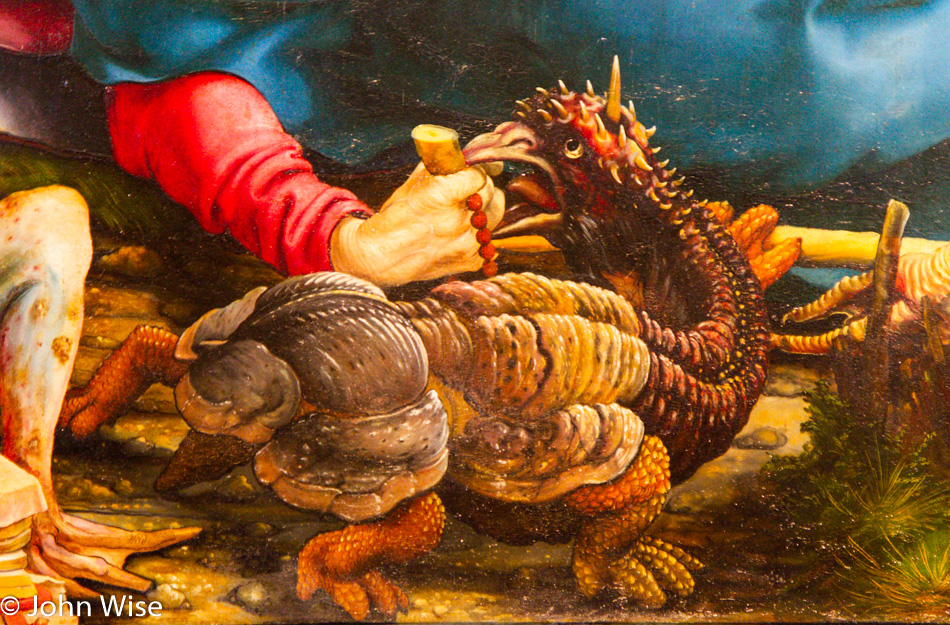
Just what kind of chicken crab lizard is this abomination? Look to the left, where you see the webbed foot of what is next to this.
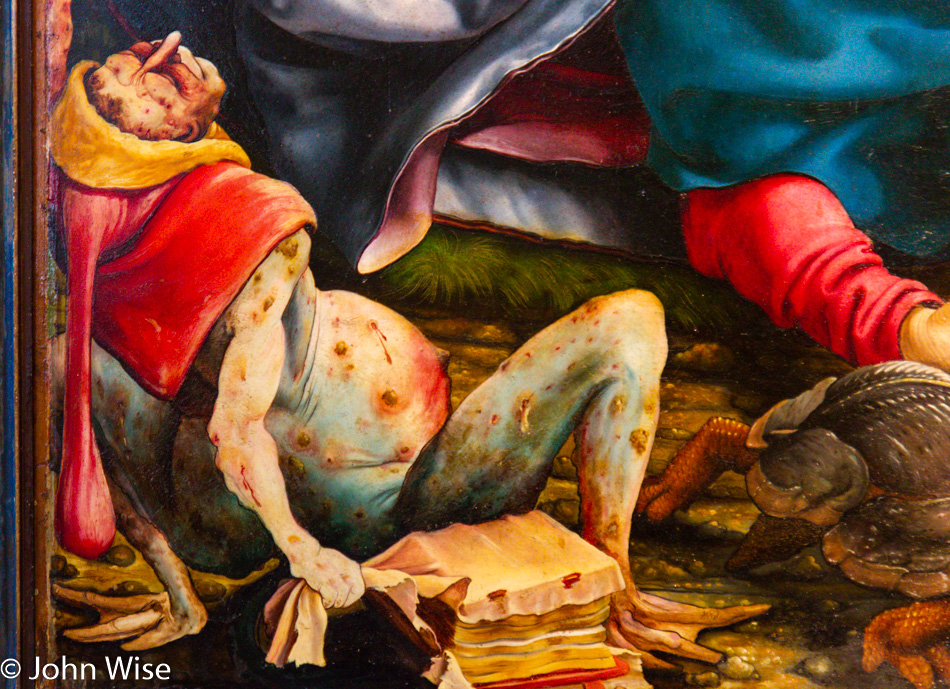
This seems fairly obvious to be a victim of ergot poisoning (also referred to as St. Anthony’s Fire), but the webbed feet and the backside of the body on the lower left beg for interpretation.

And now the dream slash nightmare goes full-on bizarro with cartoon characters, hawk warriors, antlered beaver gnomes, shadow demons, and some kind of nymphs riding upside down shark kind of things and maybe some dismemberment. Seriously, this was created 500 years ago?
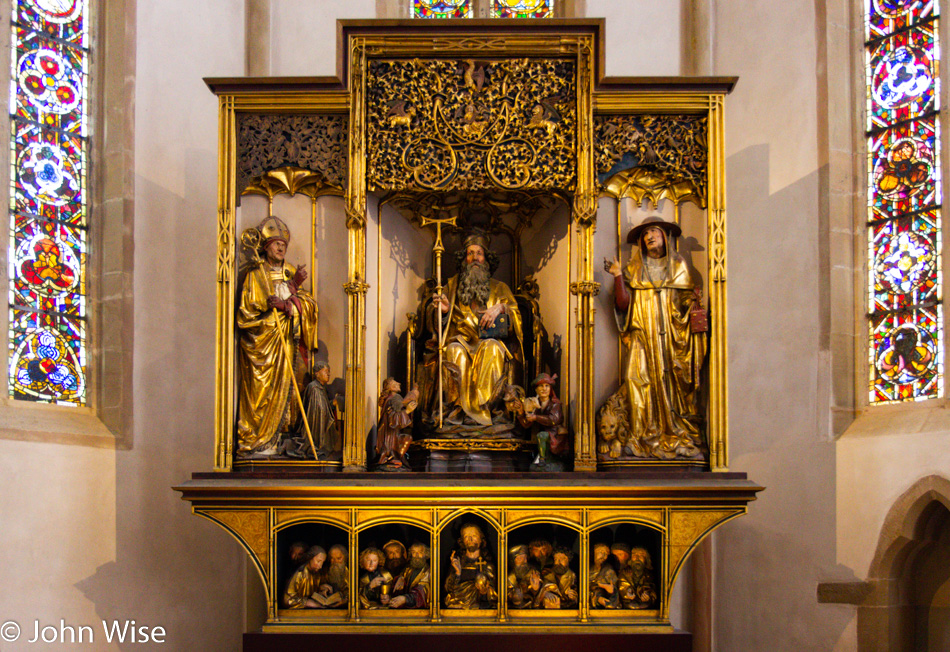
And then, finally you reach the sculptures in the innermost part of the altar. By this point, those centuries ago, the gold and detail must have thrown the minds of the faithful into a religious ecstasy that this is what sat behind all those panels. To them, this must have looked almost real and cast out of solid gold. This was our first encounter with St. Anthony on this road trip across Europe.
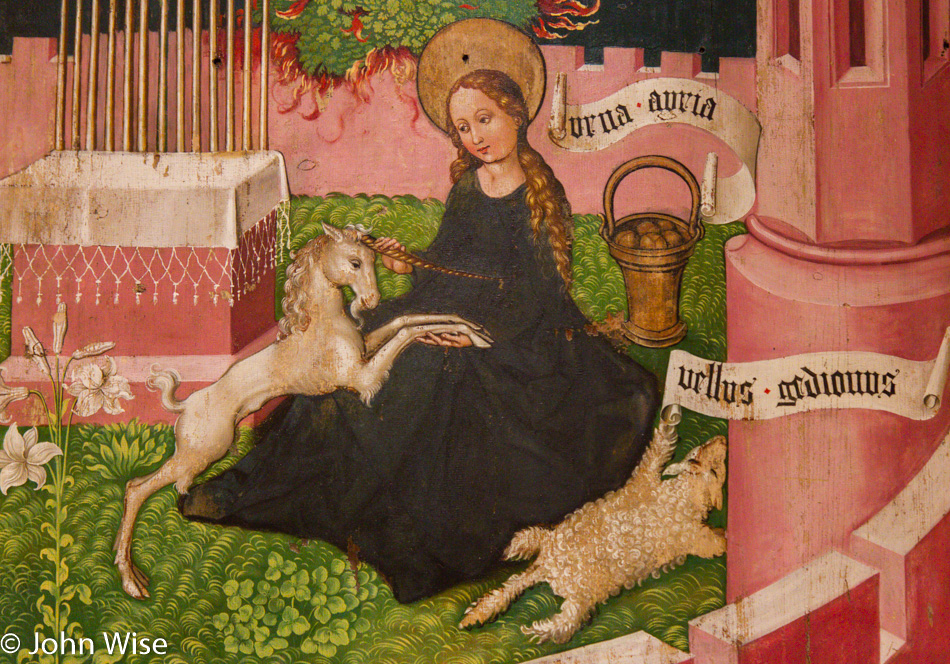
And now some pretty unicorn and a sheep.

Back on to the streets of Colmar to go find our very first Airbnb apartment.
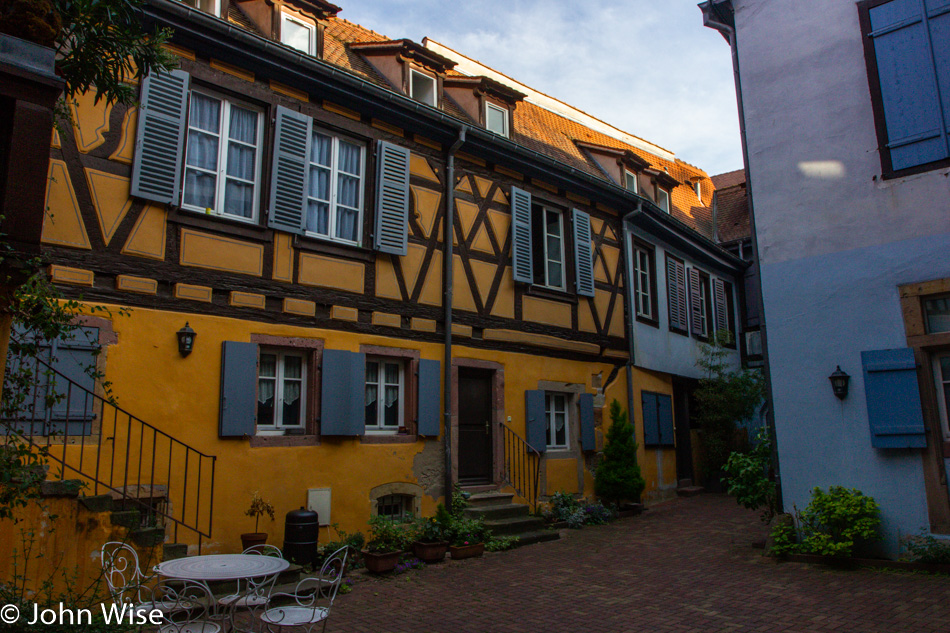
In the courtyard of our Airbnb apartment in Colmar, France, with a terrific center city location.
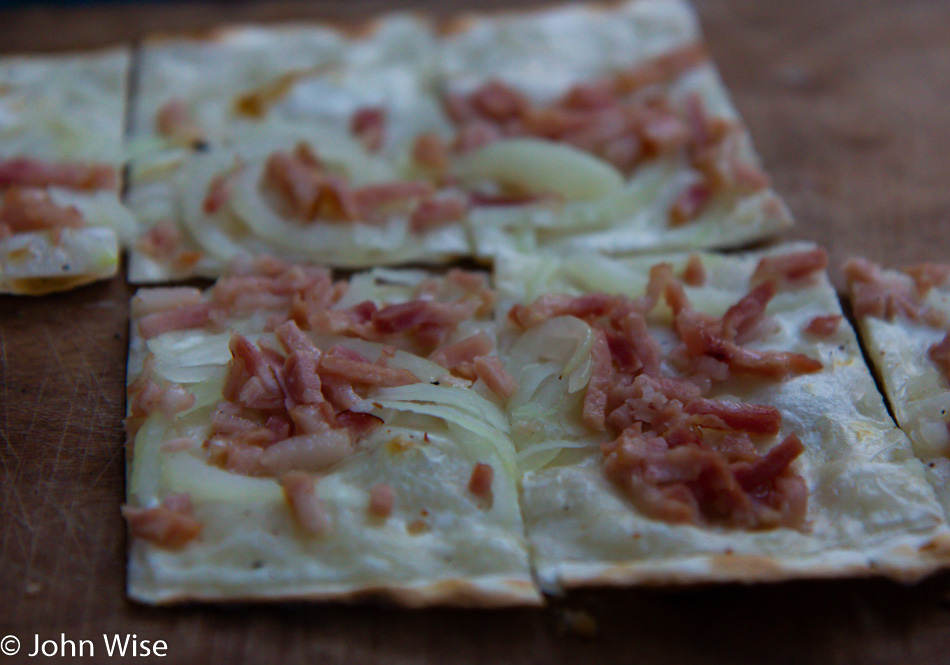
Dinner started with a local favorite called “Flambe.”

Followed by an amazing slice of foie gras with fig jam.

Caroline’s main dish was the most visually appealing; it was Spaetzle casserole served in a small iron hot pot.
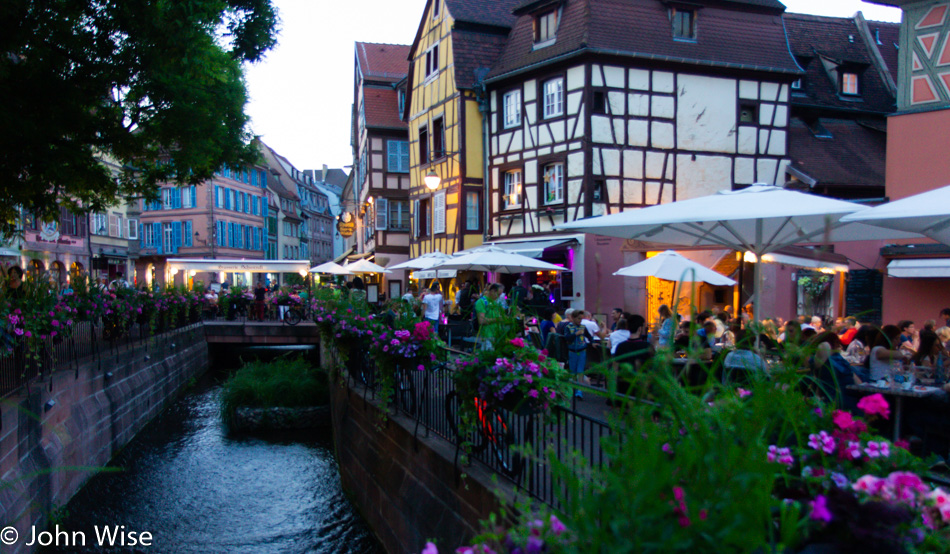
After dinner, it was time again to explore the village. Views like these are what attract visitors by the thousands.
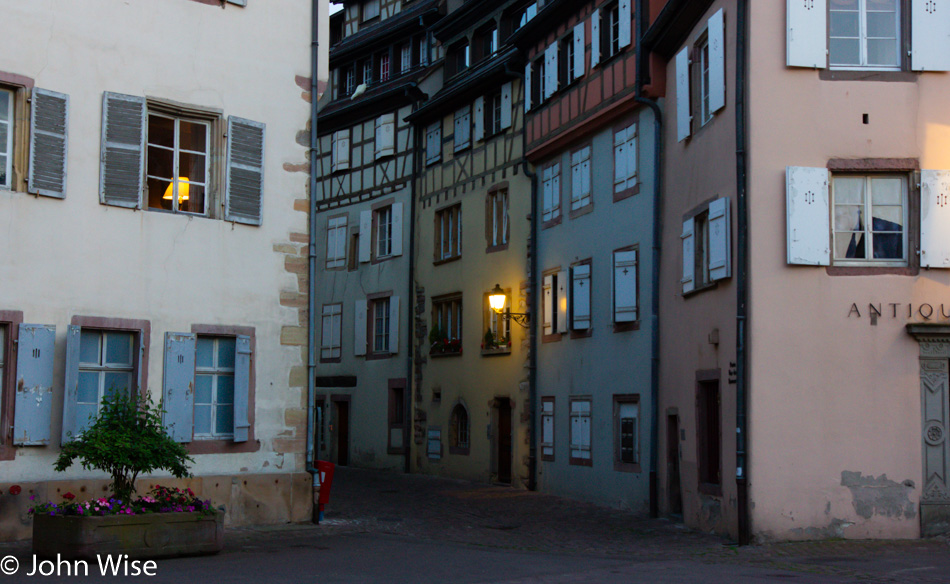
The night starts to descend on Colmar.

Late in the day, there are great details to discover, as we found here on the arch above the door of a church.
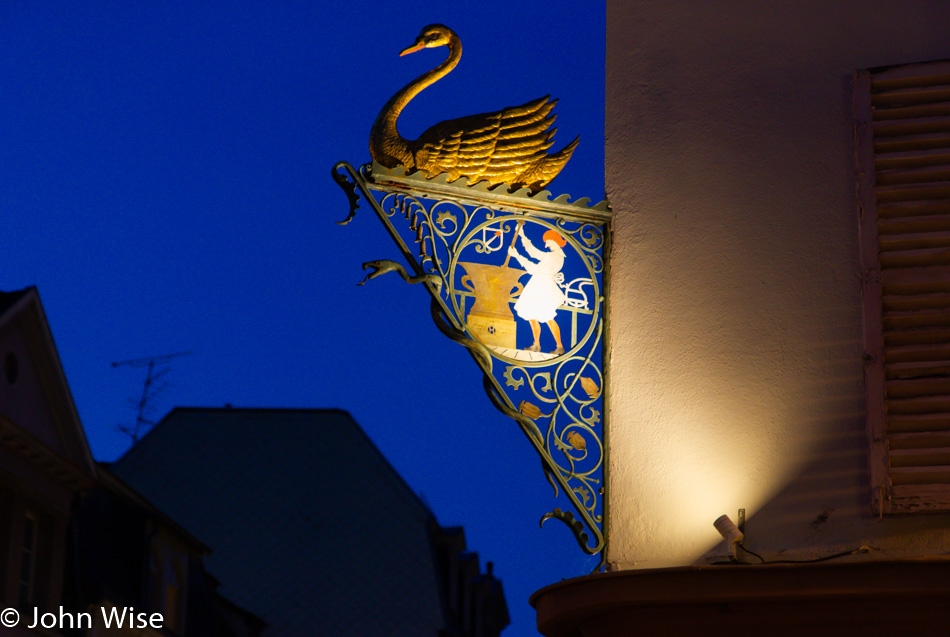
At night, this took on a beautiful glow. The next day, we almost missed it as much of the drama was missing. From here, it was a good point to head back to the apartment as our feet were sore from walking nearly 7.5 miles (12 km), climbing 13 floors, and driving a few hundred kilometers to get here.